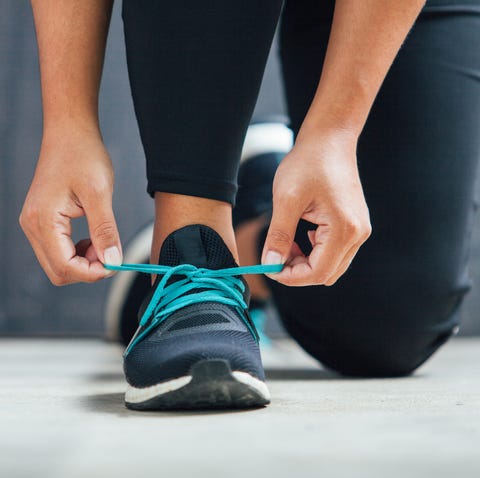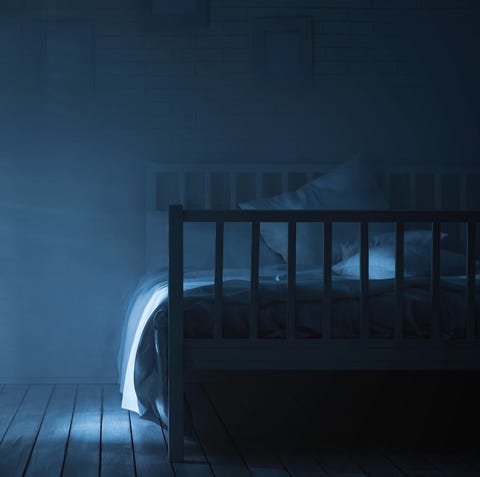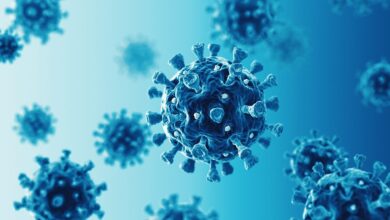How to Get Rid of a Headache Without Medication

[ad_1]
Ibuprofen, aspirin, acetaminophen: Any number of over-the-counter medications promise to make a painful, distracting headache disappear, but reaching for a pill time and time again can have the exact opposite effect when it comes to getting rid of head pain.
“It can induce something called medication overuse headaches, where too much medication actually induces more frequent headaches and makes the patient resistant to other treatments,” says Lawrence Newman, MD, a neurologist and director of the Headache Division at NYU Langone Health in New York City.
This most often happens when chronic headache or migraine sufferers use OTC medicines more than a few times a week, but even the occasional, run-of-the-mill tension headache can benefit from a more holistic approach. Drinking more water or even adjusting your sleep schedule can legitimately help ward off a throbbing head.
Just take note that you should always see a doctor if you’re experiencing headaches once per week or more, or if they’re occurring with certain red flags (more on that below). With that in mind, here’s what you can do at home to prevent and reduce headaches:
1. Rethink your sleep schedule.
To prevent migraines, Dr. Newman tells his patients to follow the mnemonic SEEDS: sleep, eating, exercise, drinking, and stress reduction. “The gene for migraines gives us basically a hyperactive or overly sensitive brain,” he says. “Because of that, any change can induce migraines.”
For example, sleeping too much or too little can induce migraines, but keeping a more regular routine can help with occasional headaches, too.
“Tension-type headaches are different than migraines in that they’re not as severe; they don’t have the nausea, vomiting, and light, sound, and smell sensitivities,” Dr. Newman says. “But those healthy lifestyle tips work for any type.”
In any case, that means avoiding sleeping in on the weekends or vacations (sorry!) and sticking to a consistent bedtime and wake time.
2. Eat regular meals every day.
If you’re not already eating breakfast, now’s the time to start. Fueling your body from sunup to sundown can also help keep headaches at bay. “If you can’t have three meals a day, at least have small, healthy snacks like almonds or raisins throughout the course of the day,” Dr. Newman advises.
3. Try a workout.
Working out with a pounding head doesn’t exactly sound ideal, but hear this out: “Exercise can help because exercise releases endorphins, which are natural pain killers,” Dr. Newman explains.
Shoot for at least 150 minutes of moderate-intensity exercise for week, the U.S. Department of Health and Human Services advises. That can include walking, swimming, biking, jogging, or your favorite heart-pumping class at the gym.
4. Stay well hydrated.
Dehydration is a known trigger of migraines, Dr. Newman says, so make sure you’re sipping enough water.
Most of us need to drink at least eight cups per day, advises Jaclyn London, MS, RD, CDN, and that number goes up when you factor in heat, sweat, medications, and humidity shifts. “Start your day with a little refreshment in the form of 16 ounces of water — right away,” she says. Keeping a 16-ounce container of water on your nightstand or putting out a glass before bed to fill in your kitchen in the morning helps.”
5. Keep stress in check.
A progressive muscle relaxation exercise can help unclench tensed muscles contributing to your headache, says Noah Rosen, MD, Director of Northwell Health’s Headache Center in Great Neck, New York. Here’s how to do it, according to the Cleveland Clinic:
- Focus your mind a specific muscle group, like the ones in your hand. Inhale and squeeze, making a tight fist, as hard as you can for about 8 seconds.
- Release the tension by exhaling and quickly opening your hand. Feel the muscles relax and the tension subside.
- Repeat with different muscle groups in your body, starting in your feet and moving up all the way to your face.
Mindfulness techniques like guided imagery may also help you take your mind off the pain. “By finding a way to teach someone not to attend to the problem, it can reduce the impact,” Dr. Rosen explains.
6. Drink some coffee.
If you usually down a few cups each morning and you’ve missed out this A.M., that’s the likely culprit behind your pain.
“There’s good evidence that if you do drink caffeine, you need to stay stable on the dose because reducing significantly can precipitate a withdrawal headache,” Dr. Rosen says. Since drinking too many caffeinated beverages can cause headaches in some people, try to average less than 150 milligrams of caffeine per day (about two 8-ounce cups of coffee), he adds.
7. Reach for an ice pack or hot pack.
Which one you prefer is up to you, but they both can help with migraines and headaches. “Ice packs work because they basically numb the area,” Dr. Newman says. “Hot packs work because they increase the blood flow to that area.” If you’re at home, try stepping in the shower and letting the warm water hit your head.
8. Get a massage.
With tension-type headaches, some people also experience increased muscle tension, so releasing the trigger points could help, Dr. Newman says. “Have your significant other or friend press on the trapezius muscles in your shoulders,” he advises. Pressing on the temple areas or over the ears can also help relieve bands of tight muscles.
9. Seek out a dark, quiet room.
“One of the core symptoms of migraines is photosensitivity,” Dr. Rosen says. “Light and noise can be directly impairing.” Distancing yourself from whatever’s exacerbating your pain can help you get back to 100% faster. If you can’t get away, try closing your eyes and relaxing for a moment.
10. Take a break from screens.
One of the most common symptoms associated with Computer Vision Syndrome or Digital Eye Strain is headaches, the American Optometric Association states. Whether it’s a computer, cell phone, or tablet, just scrolling up and down can trigger headaches in some people, Dr. Newman says. To prevent discomfort, the AOA recommends following what’s called the 20-20-20 rule: Take a 20 second break to view something 20 feet away every 20 minutes.
11. Try a vitamin B2 supplement.
“High doses of vitamin B2 have been shown to decrease migraines,” Dr. Newman says. Taking 400 mg per day of the nutrient — also called riboflavin — had a positive effect on adult migraine patients, according to 2017 review in the Journal of Clinical Pharmacy and Therapeutics.
12. Quit smoking.
The nicotine from cigarettes, cigars, and even secondhand smoke can contribute to headaches, especially migraines and cluster headaches. That’s because the compound triggers blood vessels to constrict and reduces blood flow to the brain, ultimately leaving you with a hurting head. Ditching the cigarettes or avoiding smokey places can prevent the pain in the first place, according to the Cleveland Clinic.
13. Keep a diary to identify triggers.
Not only can a journal help you track symptoms that signal the onset of a headache or migraine, but it may also reveal the foods and drinks that trigger them. The specific culprits can vary from patient to patient, but aged cheeses, MSG-containing foods, and artificial sweeteners are a few common ones. Dark alcohols like red wine, whiskey, bourbon are also more likely to cause migraines than white wine, gin, or vodka, Dr. Newman says.
When to See a Doctor About Headaches
Don’t power through regular head pain solo. See a doctor if you’re experiencing headaches once per week or more or if they interfere with your everyday life. Not only can healthcare providers prescribe you medication, but they can also identify a potential underlying medical condition. Major red flags include:
- Headaches with an explosive onset (“thunderclap headaches”)
- Headaches that come on during certain activities (e.g., weight-lifting, coughing, exertion, sex)
- Headaches with fever or stiff neck
- Headaches associated with changes in cognition
- Headaches with weakness or numbness
- Headaches that start after age 50
Play it safe and always seek out professional help if you have any concern about your health. The American Migraine Foundation offers resources for how to talk to your practitioner about headaches in order to help you find the best plan of action.
This content is imported from {embed-name}. You may be able to find the same content in another format, or you may be able to find more information, at their web site.
This content is created and maintained by a third party, and imported onto this page to help users provide their email addresses. You may be able to find more information about this and similar content at piano.io
[ad_2]
Source link







